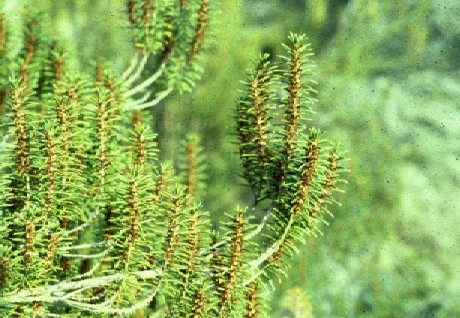
Empetreae
(Crowberries)

 |
Empetreae |
 |
 |
 |
|
Most species of crowberries have tiny flowers that are
not colorful because the flowers are adapted for wind pollination. In
the older literature crowberries were not considered part of the Ericaceae,
but were placed in their own family Empetraceae. Recent research using
DNA sequences and morphological characters has shown that the crowberries
are part of the Ericaceae and that they are related to rhododendrons and
heathers in subfamily Ericoideae.Crowberries have fruits that are fleshy
and either black or very dark red. Birds eat the fruits and presumably
have contributed to the spread of some species over large distances.The
distribution of the red crowberrry, Empetrum rubrum, is one of the most
interesting in the world. This species is found in the boreal regions
of the northern hemisphere and in the southern end of South America, but
nowhere in between. |
 |
 |
 |
How did this species end up with such a bipolar distribution?
Some scientists have suggested that birds distributed the seeds from one
end of the globe to the other. Crowberry leaves are very small and needlelike.
In fact, they were placed in a group of conifers at one time in the past!
One species, the Florida Rosemary (Ceratiola ericoides) is endemic to the
sandhills of northern Florida. The Florida rosemary gets its name from the
aromatic oils present in the leaves. In the heat of the day these oils are
volatilized and smell very similar to the familiar rosemary herb in the
mint family. |
back to Ericaceae / back to Ericoideae |
|
|
back to homepage
|
|